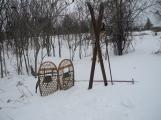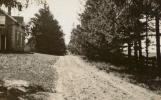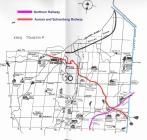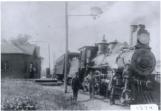1
One room schools in most rural communities offered school up to the Grade 8 level. If there was a demand, such as the example of the 'continuation school' in Schomberg, a qualified teacher was found who could provide some instruction at the high school level. However, most children wishing to attend high school had to leave their home and community and travel to the nearest town, in this case Newmarket and Aurora. Sometimes they would travel back and forth every day, or they might board in town and return on the weekends. The expense of traveling and board was not in the budget for every family and would be quite a hardship for some. These schools also charged fees to out of town students.The lack of access to higher education and the demands of farming or family resulted in rural students attending high school in much smaller percentages than their urban contemporaries.
3
The roads could be impassable in the winter and were often not open for safe travel. On those very cold and snowy days sometimes a parent would hitch the horse to the sleigh to make the trip.5
5th concession (Jane St.). Typical winter snow-tunnel in the 1940's1948
King Township
 Credits:
Credits:Tony Rolph
7
Almost everyone walked to school and rural school sections were arranged to accommodate this expectation. Groups of children would walk together for companionship and to make the long walk seem less long.8
Yonge Street and the railway, looking north in Richmond Hillc1905
Richmond Hill
 Credits:
Credits:City of Toronto Archives
10
Construction of the railway affected every community. Wealthy people and the municipalities invested heavily in these railway projects. The enterprises were awarded contracts to build the rail bed, stations, and to supply cord wood, etc. Hundreds of labourers provided the manpower, augmented by horse drawn ploughs, and by the occasional steam power excavator, to level the rail bed.12
An example of a student using a bicycle for travel. Detail from photo, Eversley School 18961896
King Township
 Credits:
Credits:King Township Archives
13
Cycling was so popular in the 1880s and 1890s that everyone wanted to ride a bicycle. Comfort and safety in bicycles was increasing and the cost was going down as manufacturing methods improved.It was a practical investment for a young man as transportation, and gave him greater flexibility for leisure. Ladies too could now ride a much more versatile machine and still keep their legs covered with long skirts. The bicycle instituted "common-sense dressing" for women and increased their mobility considerably.
14
The First "Big Bus" for the Holland Marsh Schoolcirca 1948
King Township
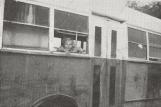 Credits:
Credits:King City Archives

